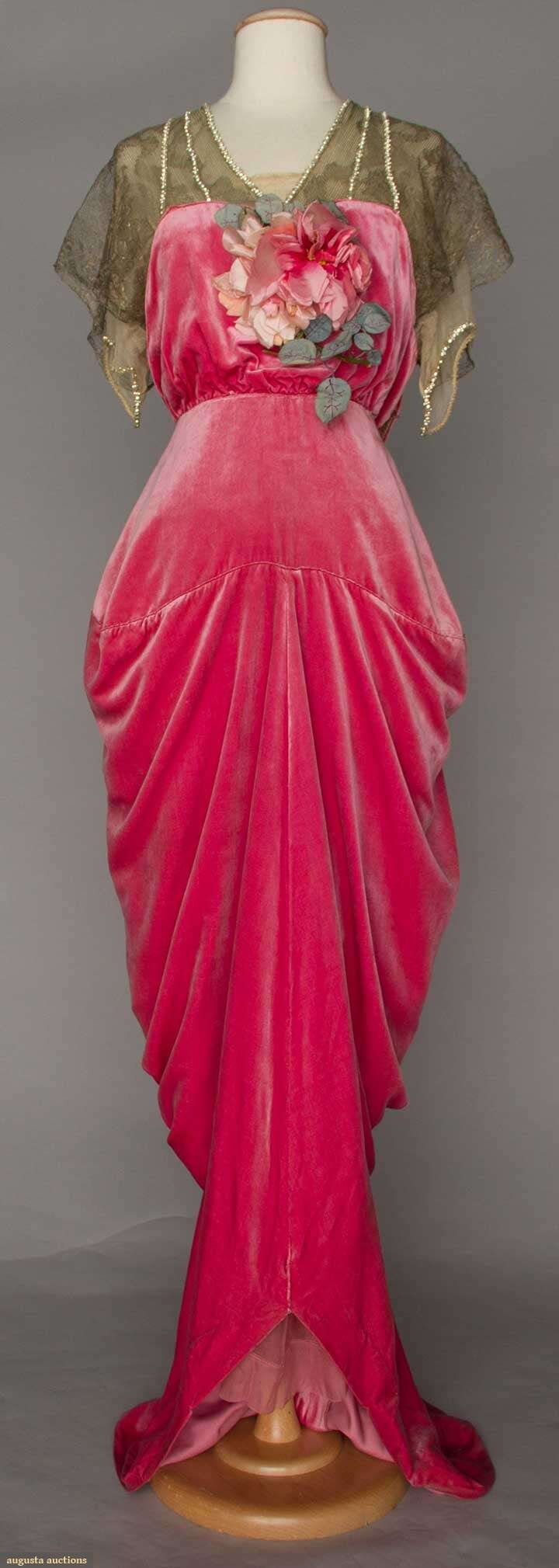Welcome to another “Fabric Junkie” installment! Today we’ll continue the discussion on fiber and weave. In my last piece about this topic, I noted that many sellers (and buyers) think of the two as the same and treat them as such, e.g., by stating the weave, they believe they’ve covered both. But, again, weave is only half the story. People often don’t realize that several different fibers can be used to create the same weave. Last time I talked about satin, taffeta, and chiffon. Today we’ll look at three more fabrics that are also popular and typically presented in terms of weave only. These are jersey, velvet, and gabardine.
Jersey: A single-knit fabric that is thin, smooth, and drapes well. Many people associate jersey with cotton (those popular concert t-shirts, soft cotton tops and skirts, etc.). But jersey knit can be made from a very wide variety of fibers: silk, rayon, polyester, nylon, even wool. Cotton/polyester blends are quite common. Jersey can be very flattering and suitable for body-conscious styles.
Velvet: One of the most common fabrics for which people mistakenly equate fiber and weave. But, like jersey, velvet can be silk, rayon, cotton, nylon, polyester, or blends. A cut-pile fabric, it’s woven into a plain or twill backing with a “pile” of yarn formed by loops raised from the surface. The loops are then cut to form “strands,” or the nap. Cotton is made into both velvet and velveteen. It’s difficult to tell the difference between them only by looks. But when you feel both, they’re distinguishable from one another. Velveteen has a very short, dense nap and feels “stiffer” than velvet. Cotton velvet is softer, generally with a slightly longer nap, and has more sheen to it than velveteen. But still not as lush as rayon or silk velvet. Today’s silk velvets are often a silk pile woven into a rayon backing. Although one can still find all-silk velvet, its cost as a yards good can be prohibitive.
Gabardine: A type of twill weave, it exhibits steep diagonal lines, or ribbing, on its surface. It’s very sturdy and durable, used for suits, trousers, coats, etc. Relatively wrinkle free, it’s also good for sportswear and work clothes. Although many people think of it as wool, it can be made from polyester, cotton, rayon, and blends.
How to determine fiber and weave? If you read our last installment, this will sound familiar! The best way is through handling as many different known fibers and weaves as you can. Note the content and weave of modern and vintage garments you already have—how they feel, how they drape, etc. Go to the fabric store, take a bolt of rayon velvet and one of cotton velvet, and compare the feel. There is nothing like “hands-on” practice! Identifying fabrics will become much easier over time. But, no matter how well versed you are, sometimes you just can’t tell. You should learn how to do a burn test for fibers you can’t identify. This isn’t always possible, but it can be valuable when it is. Because many fabrics consist of blends of fibers, even a burn test may be inconclusive.
It’s not a crime to not know what fiber an item is made from. But, I think sellers should at least state a “best guess”; be clear that it is a guess. In online selling, where a buyer can’t handle an item, it’s important for them to have an idea how something feels, drapes, and will look on them. Knowing the fiber and weave of a piece can go a long way to that end.
Written by Anne Cook/Vintage Baubles, MyVintageCocktail on Etsy.

Silk velvet dress by Robert, Paris, ca.1910. Photo courtesy of Augusta Auctions.